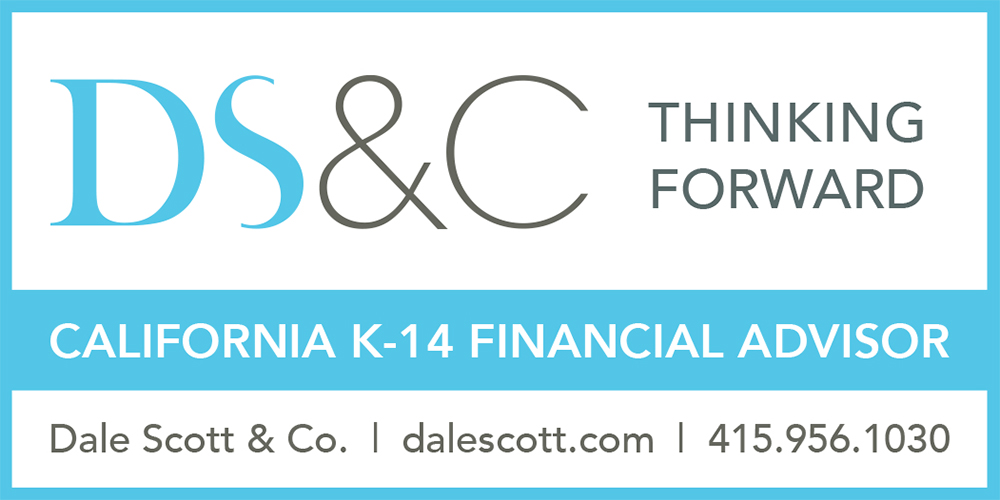Budget
State budget reflects CSBA advocacy wins
Dedicated advocacy from district and county office board members resulted in gains for California’s students
After months of advocacy from CSBA and school district and county office of education board members across the state, the final agreement delivered major wins for CSBA’s top priorities. The investments made in the final budget to rebuild the home-to-school transportation program, boost the Local Control Funding Formula base funding, provide attendance relief to counteract the impacts of the pandemic, and ensure the success of expanded school nutrition programs reflect hard-fought advocacy and will improve the lives of California’s students for years to come.
“I’m proud of the consistent effort our members and CSBA’s staff, working with our education partners, put into communicating to the Legislature the dire need for increased base funding, a greater investment in home-to-school transportation, and providing attendance relief due to COVID disruptions,” said CSBA CEO & Executive Director Vernon M. Billy. “Our collective persistence paid off and local educational agencies will see more state funding to support schools.”


In two recent audits, the Government Accountability Office has called attention to concerns over the impacts of COVID-related learning loss and trauma and the persistent segregation in schools along racial, ethnic and socioeconomic lines.
Some students excelled during distance learning due to increased flexibility to work at their own pace and strong family support. However, “compared to a typical school year, teachers reported that more of their students started the 2020–21 school year behind and made less academic progress,” the report states. As a result, many students ended the year behind grade level expectations. This was especially pronounced among lower grades.

Troy Flint | tflint@csba.org
Editorial Director:
Kimberly Sellery | ksellery@csba.org
Marketing Director:
Andy Rolleri | arolleri@csba.org
Staff Writers and Contributors:
Alisha Kirby | akirby@csba.org
Heather Kemp | hkemp@csba.org
Teresa Machado | tmachado@csba.org
Kristin Lindgren | klindgren@csba.org
Dustin Bindreiff | dbindreiff@csba.org
Graphic Design & Branding Director:
Kerry Macklin | kmacklin@csba.org
Senior Graphic Designer:
Amanda Moen | amoen@csba.org
Dr. Susan Heredia | Natomas USD
President-elect:
Susan Markarian | Pacific Union ESD
Vice President:
Albert Gonzalez | Santa Clara USD
Immediate Past President:
Xilonin Cruz-Gonzalez | Azusa USD
CEO & Executive Director:
Vernon M. Billy
California School News (ISSN 1091-1715) is published 11 times per year by the California School Boards Association, Inc., 3251 Beacon Blvd., West Sacramento, CA 95691. 916-371-4691. $4 of CSBA annual membership dues is for the subscription to California School News. The subscription rate for each CSBA nonmember is $35. Periodicals postage paid at West Sacramento, CA and at additional mailing office. POSTMASTER: Send address changes to California School News, 3251 Beacon Blvd., West Sacramento, CA 95691.
News and feature items submitted for publication are edited for style and space as necessary.


The 2022 back-to-school season has been less anxiety-filled than the 2021 version, which for most LEAs marked the resumption of full-time, in-person instruction after months of remote learning. While COVID-19 still looms in the background, it is not front-and-center of the discussion around public schools. Instead, myriad issues like staffing shortages, declining enrollment, learning loss and acceleration and test scores dominate the conversation, with other topics like the shift to later school start times and home-to-school transportation also earning headlines.
In recent weeks, I’ve had the opportunity to explore these subjects with the leaders of organizations that represent constituent groups of school board members throughout the state, like the Asian Pacific Islander School Board Members Association (APISBMA), the California Association of Black School Educators, the California County Boards of Education and California Latino School Boards Association. I always appreciate the dialogue with these groups, as their memberships helps make up the diverse quilt of trustees that serve on behalf of California’s 6 million public school students. Our discussions always reveal fresh perspectives and urgent issues that inform CSBA’s advocacy on behalf of our state’s nearly 1,000 local educational agencies.
What does your district have planned for the 2022–23 school year to foster learning recovery and educational advancements?

Governance
CSBA debuts Board Presidents Forum
A unique, interactive engagement opportunity to sharpen board president’s skills

CSBA is pleased to offer a free forum for board presidents to collaborate, share best practices and engage on important, timely topics in a safe space. Board presidents will be able to discuss the issues most relevant to them today. CSBA Governance Consulting Services faculty members will respond to questions and concerns and provide best-practice perspectives on specific issues. This new and valuable tool is specifically designed to enhance the governing capabilities of board presidents and to support their vital role as members of the governance team.
The forum will launch this month on CSBA’s Online Learning Center platform and be focused on discussion topics such as early childhood education, equity, policy, community engagement and crisis management. Masters in Governance® faculty will monitor and reply to posts along with other board presidents. Your questions will have a response within 48 hours. The forum will be available for posting, reading and discussion 24 hours a day, every day. All of this from wherever you are, at your convenience.
“We are excited about this new avenue of learning, interacting and the sharing of best practices that the Board Presidents Forum is designed to deliver,” said CSBA Director of Trainings Darcel Harris Lee. “We are living in times that are stressful, chaotic and challenging. CSBA is determined to be the organization that our members can trust to provide them with the knowledge, information, tools, policies, protocols and shared experiences that will allow our board presidents and their fellow board members the opportunity to grow, manage and develop their districts in ways that will speak to their ultimate mission: the success of each and every student in the state of California.”
Governance
Registration open for the California Student Mock Election
The last two weeks of September are designated as High School Voter Education Weeks

As California prepares for the general election in November, Secretary of State Shirley Weber and the California Department of Education are encouraging schools to get students involved and excited about civic engagement through partnering to host a 2022 California Student Mock Election on Oct. 11, 2022. The last two weeks of September have been designated by the state as High School Voter Education Weeks.
This student mock election program is for middle and high schools and helps young people realize the importance of elections and the power of their vote in the democratic process. It allows students a glimpse into how government and politics affect their daily lives and provides firsthand experience with the electoral process by giving them a chance to make their voices heard on the candidates and issues important to them and their families. Once all the votes are counted, students will be able to compare their votes to those of their peers at schools from across the state.

California is home to the largest Latino population in the United States, with 55 percent of the student population identifying as Latino/Hispanic. (The terms are often used interchangeably in education, as Hispanic is the official state and federal category for this population.) The federal government has designated Sept. 15 to Oct. 15 as National Hispanic Heritage Month — a time to appreciate the community’s history, heritage and contributions of the ancestors of American citizens who came from Mexico, Spain, the Caribbean, and South and Central America. In this article, CSBA is highlighting a handful of programs that focus on the achievement and support of this student group.

Nonetheless, the district still allowed FCA to organize and meet on campus as a “student interest group.” Two of the main differences between FCA as a student interest group and ASB-recognized groups on campus were that FCA could not have an ASB bank account or recognition in the yearbook. As part of the lawsuit, FCA sought a preliminary injunction that would require the district to again provide ASB recognition to FCA.

Recognizing this value, Assembly Bill 643 (Ramos, D-Highland), “encourages districts to provide students with opportunities to explore, make career choices and seek appropriate instruction and training to support those choices by hosting apprenticeship fair events, such as college and career fairs.” High-quality apprenticeship programs are often an overlooked transition into a career and AB 643 aims to address that by requiring a district that is hosting a college and career fair (“opportunity fair”) to notify apprenticeship programs in their community. By inviting these apprenticeship programs to participate, districts will be better equipped to share with their students a wider range of careers, and students will benefit from the exposure to alternative career paths.

Following years of rapidly rising suicide rates among youth, many feared the widespread stress and disruption caused by the pandemic would further exacerbate the problem. But the data show a very different trend — suicide rates inexplicably fell in 2020 for California youth ages 15 to 24 for the first time in years.
At the same time, however, the number of suicides among children ages 5 to 14 doubled between 2019 and 2020, from 27 to 54, according to the latest release from Kidsdata, a program of the Population Reference Bureau. This is more in line with what experts expected. According to a June 2021 report from the Centers for Disease Control and Prevention, mental health-related emergency department visits in the United States for those ages 12-17 increased 31 percent from 2019 to 2020. Emergency department visits for suspected suicide attempts started to increase in the age group in May 2020.

While students, parents, teachers and school safety officials have many concerns when it comes to school safety, an active shooter/attack tops the list across stakeholders. This and more was revealed through the 2022 State of School Safety Report, which assesses perceptions, issues and gaps in understanding safety in schools through a nationally representative survey of parents of K-12 students, school stakeholders/employees and school/public safety officials.
The fifth annual survey and report, produced by Safe and Sound Schools in partnership with Raptor Technologies and Lightspeed Systems, highlights safety issues important to all stakeholders and identifies areas where further exploration, education and conversations are needed.
One key finding of the report — student perceptions of their own safety, their school’s preparedness for emergencies, and their school climate and culture were consistently lower than the perceptions of the adults in the survey. This indicates a need to listen more fully to student voice.
Included in the state’s California Community Schools Partnership Program (CCSPP) — a seven-year, $3 billion effort to prioritize the whole-child approach to education — are planning and implementation grants and a three-year, $12 million grant to launch a lead technical assistance center (TAC) to assist school communities.
The Alameda COE was appointed lead TAC during the May State Board of Education meeting. In this role, the county office will build content and overarching methodology for CCSPP technical assistance; build a developmental implementation rubric to articulate community school implementation benchmarks; and facilitate a community of practice among the regional TACs. The University of California, Los Angeles, Center for Community Schooling is assisting the Alameda office as co-lead of the technical assistance center.
MIG Course 2: Student Learning & Achievement/Policy & Judicial Review
MIG Course 4: Human Resources/Collective Bargaining
MIG Course 5: Community Relations & Advocacy/Governance Integration
Oct. 20
The Brown Act | Rancho Cucamonga
2022 Annual Education Conference | San Diego









